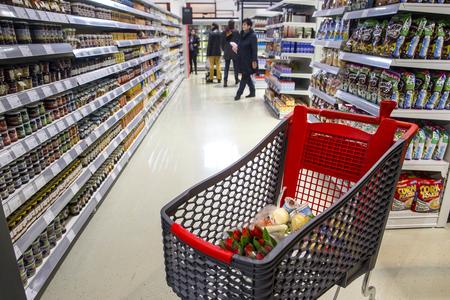The inflation rate slowed down in October. Though consumer prices rose by 0.1 percent compared with the previous month, in annual terms they went up by only 2.5 percent, down from 2.7 percent yearly growth in September.
“The October surprise concentrated exclusively on a sole item in the consumer basket: food, particularly fruit,” Ľubomír Koršnák, analyst with UniCredit Bank Czech Republic and Slovakia, wrote in a memo.
On the other hand, fuel prices continued increasing, while demand inflation did not report any changes to its annual growth dynamics, Koršňák added.
Good domestic harvest could have an impact
The prices of food dropped by 0.5 percent month-on-month, according to the Statistics Office data. They were impacted mostly by the decrease in the fruit prices, which fell by 15.8 percent m-o-m. The prices of oils and fats and meat also dropped, but only by 0.9 percent and 0.2 percent respectively.
Though the drop in fruit prices in October is nothing unusual, it was more massive than expected, according to Koršňák.

“It is probable that the prices reflected a good domestic harvest,” he added.
On the other hand, people paid 11.5 percent more for vegetables, 1.9 percent more for fish, and 0.3 percent more for milk, cheese and eggs, the statistics suggest.
As for the increase in the prices of oil, Koršňák opined that one of the effects impacting growth could have been a weakening euro. Fuel prices rose by 0.5 percent in monthly terms, and by up to 13 percent in annual terms, he added.
“On the other hand, the transport prices dropped when compared with September, despite the growing fuel prices in October,” Koršňák wrote in the memo, adding that one of the reasons were cheaper older cars and lower prices of plane tickets.
He added that the demand inflation did not change despite the drop in transport prices and the slight increase of clothing and footwear. The prices of market services and tradable goods rose by 0.2 percent m-o-m and by 2.4 percent year-on-year, according to the analyst.
No big changes for the near future
Koršňák expects that the November inflation rate will be very similar to the October one. It will be slowed by the food prices, but this effect will be partially subdued by the higher prices of cereals and higher energy prices.
At the same time, the dynamics of fuel prices growth is expected to slow down at the end of the year. However, prices will still be about one-tenth higher than last year, Koršňák opines.
“In December, inflation is expected to go up again,” the analyst wrote in a memo, explaining that it will be affected by the rising prices of natural gas for households. These will be followed by higher energy prices in January.
Inflation next year should amount to about 3 percent next year, he predicts.



 Illustrative stock photo (source: SME)
Illustrative stock photo (source: SME)